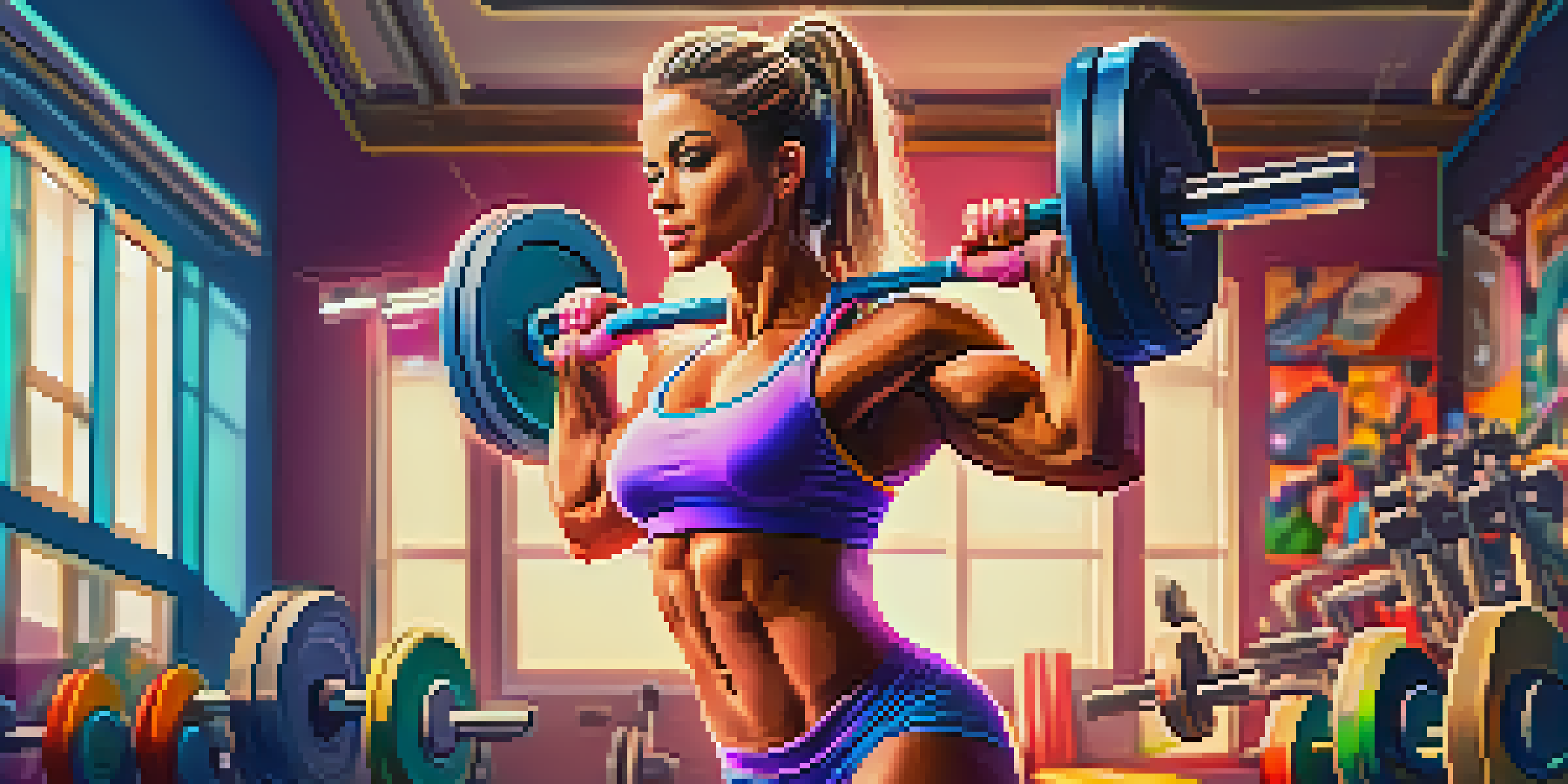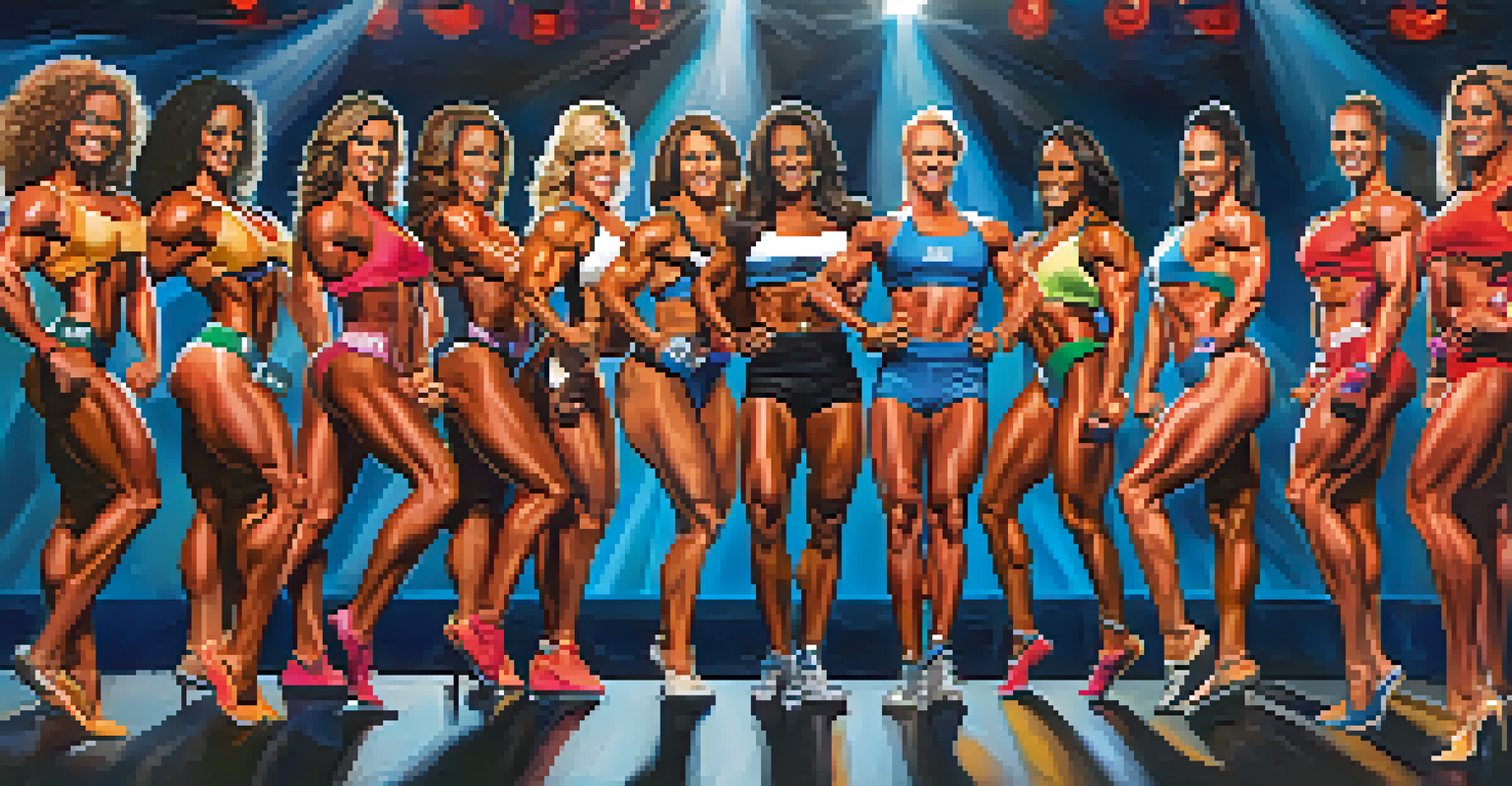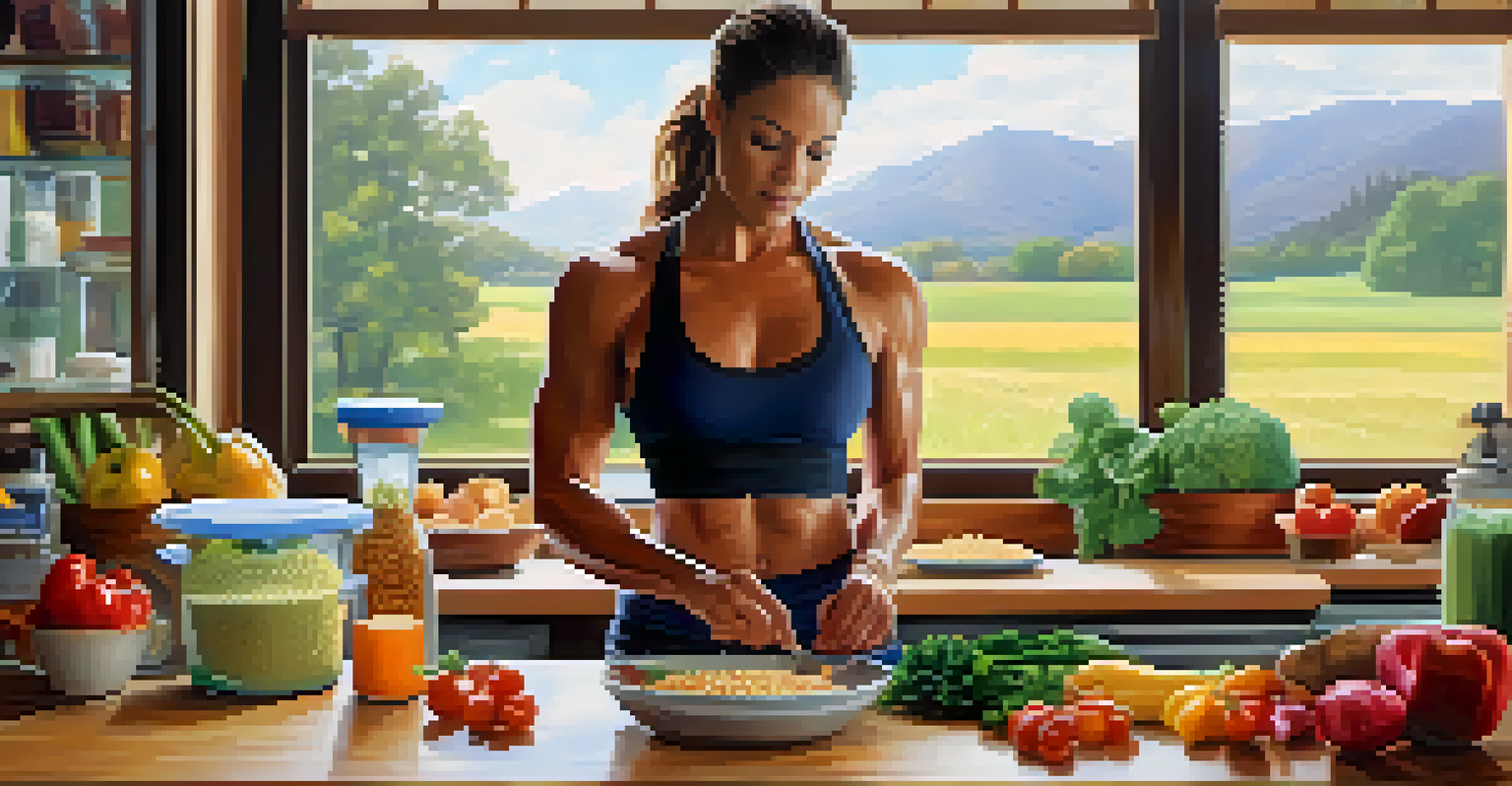Women in Bodybuilding: Cultural Perspectives and Challenges

The Evolution of Women in Bodybuilding
Women in bodybuilding have come a long way since the sport's inception. Initially viewed as a male-dominated realm, the rise of female competitors has reshaped perceptions and opportunities. This evolution reflects broader societal changes regarding women's roles in athletics and fitness.
Strength does not come from what you can do. It comes from overcoming the things you once thought you couldn’t.
In the 1980s and 1990s, female bodybuilders began to gain recognition, thanks in part to media representation and competitions like the Ms. Olympia. Women such as Rachel McLish and Linda Murray became pioneers, showcasing strength and femininity. Their success challenged stereotypes and inspired countless others to pursue bodybuilding.
Today, we see a diverse array of women participating in the sport, from amateur competitors to professional athletes. However, the journey continues to evolve, demanding ongoing discussions about representation and inclusivity within the bodybuilding community.
Cultural Perceptions of Female Strength
Cultural perceptions of female strength can vary significantly across different societies. In some cultures, strong women are celebrated, while in others, they face criticism for stepping outside traditional gender roles. These cultural attitudes can shape a woman's experience in bodybuilding, influencing both support and resistance.

For instance, in many Western societies, the image of a strong woman is increasingly embraced, reflected in campaigns promoting body positivity and strength. However, women in more conservative cultures may grapple with societal pressures that discourage muscularity or assertiveness. This disparity highlights the need for cultural sensitivity and understanding in addressing the challenges faced by female bodybuilders.
Women in Bodybuilding: A Journey
The evolution of women in bodybuilding showcases their growing recognition and the ongoing push for inclusivity in the sport.
Ultimately, changing perceptions requires continuous advocacy, emphasizing that strength in women is not just acceptable but admirable. By fostering a culture that values diverse representations of femininity, we can create an environment where all women feel empowered to pursue bodybuilding.
Challenges of Body Image in Women Bodybuilders
Body image issues are a significant challenge for many women in bodybuilding. The industry's focus on physique can create pressure to conform to specific ideals, leading to unhealthy behaviors. This challenge is exacerbated by social media, where curated images can distort reality and set unrealistic expectations.
The most courageous act is still to think for yourself. Aloud.
Women often find themselves navigating the fine line between achieving their fitness goals and maintaining a healthy self-image. While bodybuilding can promote body confidence, it can also foster comparison and self-doubt. It's crucial for female athletes to cultivate a positive relationship with their bodies, understanding that strength comes in many forms.
To combat these challenges, supportive communities and positive messaging are essential. Encouraging women to celebrate their unique bodies and achievements can help shift the narrative from competition to empowerment, fostering a healthier environment for all.
The Role of Female Bodybuilding Competitions
Competitions play a pivotal role in women's bodybuilding, serving as platforms for showcasing talent and dedication. Events like the Arnold Classic and Ms. Olympia not only spotlight female athletes but also provide them with opportunities for recognition and sponsorship. These competitions can be transformative experiences that validate women's hard work and commitment.
However, the competitive landscape also presents challenges, including the pressure to meet strict criteria for judging. Women often face scrutiny regarding their appearance, which can lead to anxiety and self-doubt. This competitive environment necessitates a balanced perspective, highlighting the importance of personal growth alongside external validation.
Cultural Views on Female Strength
Cultural perceptions of female strength vary widely, influencing women's experiences and support in bodybuilding.
Ultimately, fostering a supportive competition culture is vital. By promoting camaraderie over rivalry, women in bodybuilding can create a more inclusive atmosphere that celebrates achievements and encourages personal bests, rather than just comparing physiques.
Intersection of Race and Gender in Bodybuilding
The intersection of race and gender presents unique challenges for women in bodybuilding. Women of color often face additional hurdles, including stereotypes and limited representation within the sport. This intersectionality can impact their experiences, from training opportunities to media visibility.
Visibility is crucial; when women of diverse backgrounds succeed, they inspire others and challenge prevailing narratives. However, systemic barriers still exist that can limit access to resources and support. Addressing these issues requires a commitment to inclusivity and representation at all levels of the sport.
Creating a space that celebrates diversity not only enriches the bodybuilding community but also empowers all women to pursue their passions. By amplifying voices from various backgrounds, the sport can evolve into a more inclusive and supportive environment.
Health and Nutrition Considerations for Female Athletes
Nutrition plays a fundamental role in the performance and well-being of female bodybuilders. However, the pressure to achieve a certain physique can lead to unhealthy dieting practices. It's essential for women to prioritize balanced nutrition that supports their training and overall health.
Understanding macronutrients and their role in fueling the body is crucial, yet many women may feel overwhelmed by conflicting information. Seeking guidance from nutritionists or coaches can help demystify these concepts and create personalized plans that align with individual goals. Education is key to promoting healthy eating habits while pursuing bodybuilding.
Community is Key for Success
Building strong support networks among women in bodybuilding fosters camaraderie and enhances their overall experience in the sport.
Ultimately, a focus on health rather than appearance can lead to more sustainable practices. By encouraging women to view nutrition as a tool for performance rather than a means to an end, we can foster a healthier, more supportive environment within the bodybuilding community.
Building Community and Support Networks
Building a strong community is essential for women in bodybuilding, offering support and encouragement throughout their journeys. Many female athletes find strength in connecting with others who share their passion, whether through local gyms, online forums, or social media groups. These networks can provide a sense of belonging and motivation.
Shared experiences foster camaraderie, where women can discuss challenges and celebrate victories together. Events such as meet-ups, competitions, and workshops also create opportunities for women to connect and learn from one another. This communal aspect can significantly enhance the bodybuilding experience, creating lasting friendships.

Encouraging an atmosphere of support and positivity not only benefits individual athletes but also strengthens the bodybuilding community as a whole. By lifting each other up, women can thrive and push the boundaries of what is possible in the sport.